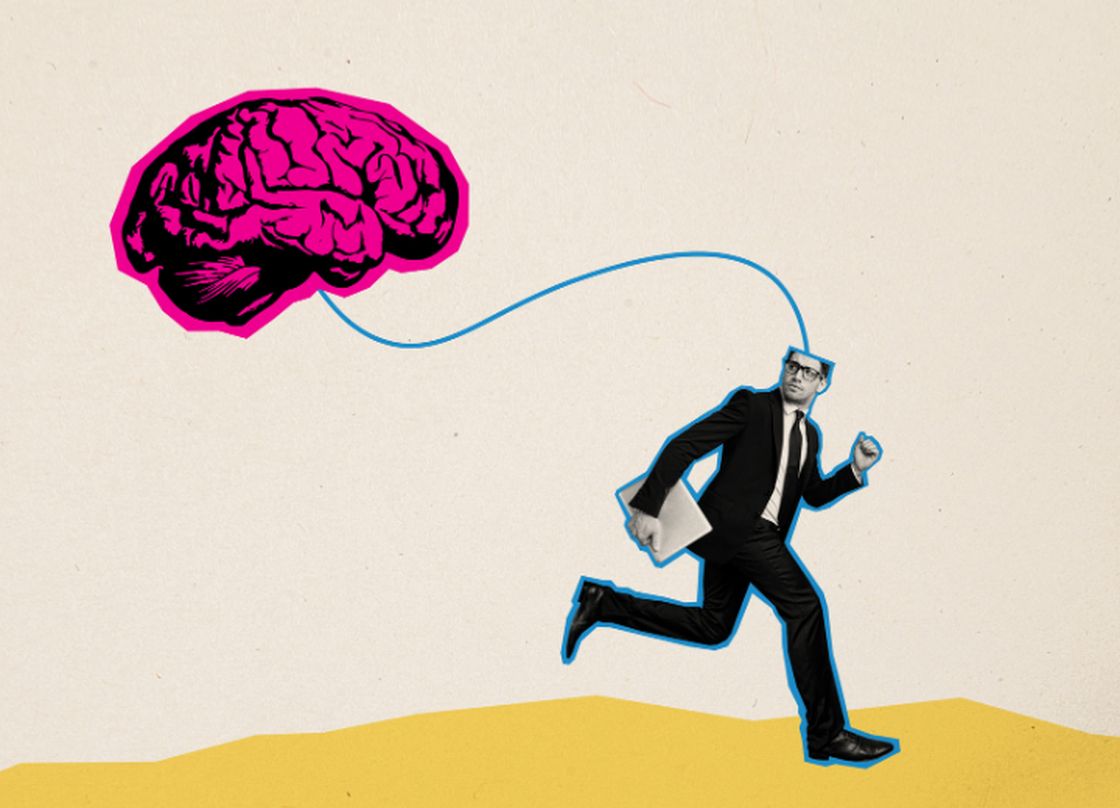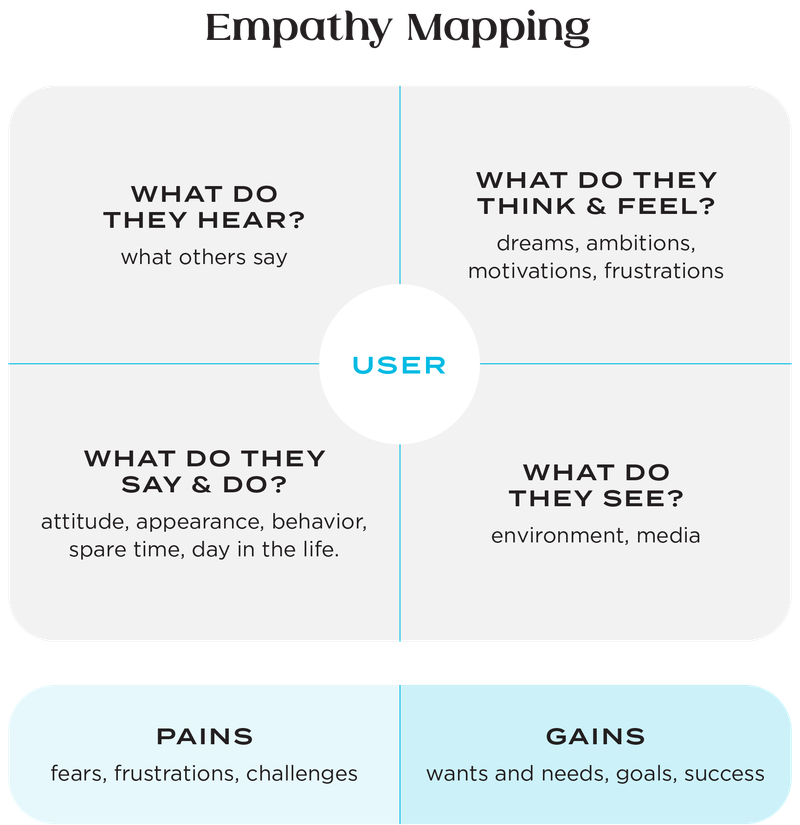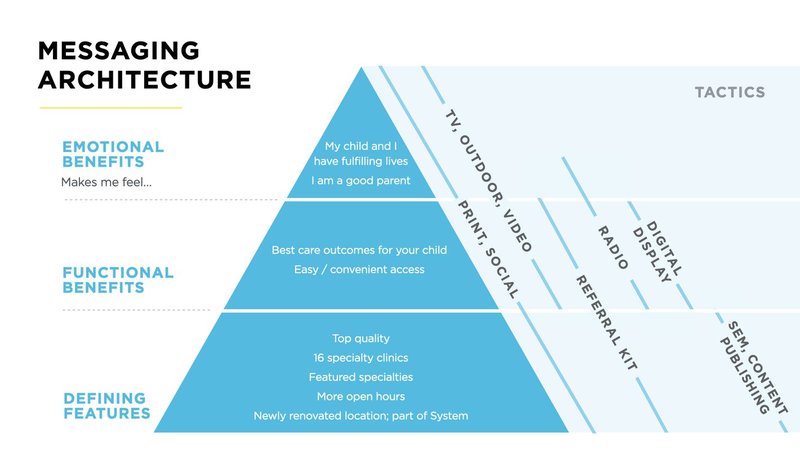

The changing digital landscape has flipped B2B buyer journeys and marketing on its head, and traditional strategies and tactics are no longer enough. The volume of information readily available is incredible. It’s given people more independence in gathering information than we’ve ever seen before. And it’s also changed the way people engage with media and brands. In many ways, this has blown up traditional B2B buyer journeys and marketing, and arguably, it was past due. But for B2B marketers, there has never been a more exciting time to rethink old paradigms and take a much more human approach to engaging your customers. It’s time to refocus your efforts through a human lens. Here’s how.
Put Yourself in Your Customers' Shoes
When’s the last time you spoke with your customers? Not to sell something, but to ask about their needs and motivations. What are their pain points? What are their emotional needs? How are you supporting them and meeting their needs? If you haven’t connected with them in a while, you need to. Putting your customers at the heart of what you do helps build a customer-centric strategy that addresses their functional and emotional needs at each step in their journey.
Qualtrics is a master at customer-centric strategy and has reinvented itself countless times to best serve its customers’ needs. Ryan Smith, Co-Founder of Qualtrics, credits their growth and success to their commitment to their customers. “We have always looked at our market, products, and people and asked, how can we continue to improve and better serve our customers?”
Few have the resources equaling those of Qualtrics, but that doesn’t mean you can’t keep a pulse on your customers. According to Allison+Partners, 45% of B2B marketing decision makers have not conducted any primary research focused on their customers’ needs and challenges in the last 12 months. That is a staggering number when there are easy things you can do to keep a pulse on your customers. Customer interviews are a great way to better understand their world and put yourself in their shoes. They can be executed quickly and easily and can provide invaluable insights. Empathy maps are a great way to capture and immerse your teams in what your customers are really thinking and feeling to truly understand what is driving their behaviors. Ask yourself, are we meeting their needs? Are we empathetic to what they’re feeling and navigating?

Your Customers are Multifaceted People, Not Just Business Buyers
Thinking of your audience as a business isn’t enough. They are people, and when you see them as people, you see the many hats they wear throughout their day. Work and personal lives intersect and overlap constantly, and the digital landscape continues to blur those lines more and more. They will have different needs and emotions depending on what hat they’re wearing, but they are still your customer, and there’s an opportunity to meet them where they are and with the right message.
Developing a benefit ladder is a great way to identify the defining features, the functional benefits and — most importantly — the emotional benefits for your product. So many B2B companies focus on specs and defining features alone and get lost in a sea of sameness. The real connection and differentiation happens when you talk about emotional benefits. CEB Research on B2B buyers identified three types of value B2B buyers experience — company value, performance value, and identity value. Not surprisingly, identity value — which appeals to an emotional sense of self — is the most motivating value for B2B buyers. It’s important to look through a human lens and consider how your messaging is connecting on that higher level.
Marrying your benefit ladder with a campaign architecture will help identify new opportunities and channels for delivering the right message at the right time. This will help define what channels will carry messages about defining features, functional and emotional benefits. Your messaging doesn’t need to be relegated to trade channels alone. Remember, our audiences are people, and meeting them with an emotional message requires channels that best deliver emotional connections. Some will think of this as consumer marketing, but it’s really just considering our audience as whole humans and meeting them where they are.

Brand Matters
According to the Harvard Business Review, 80-90% of buyers already have a list of potential vendors in mind before starting the search process, and 90% of buyers choose a brand they already have in mind at the beginning of the sales process. This means you’ve got to get into the consideration set early on. And the best way to do that is by casting a wide net with brand messaging that builds trust and rapport.
In a recent BCG and Google survey, 97% of respondents confirm that brand marketing plays an important role in creating awareness and consideration, and 95% say that brand marketing can help a company differentiate itself from competitors. And B2B companies that invest in their brand see significant long-term results with customer acquisition, cross-selling to existing customers, increased brand awareness, overall sales growth, and, they also see a higher return on their performance marketing investments.
When we look at our audiences as people, we see that people are deeply emotional. Our emotional subconscious drives most of our behavior (Gerald Zaltman, Harvard), even with B2B purchasing decisions. There is a high level of risk with B2B purchases, which makes the decision highly emotional. To mitigate risk, buyers tend to purchase recognized brands they trust over unknown brands (IE Insights). Brand building is critical, and you need to balance brand and sales initiatives in your overall marketing strategy.
The Buyer Journey has Become Nonlinear
The digital landscape has changed the B2B buyer environment quite drastically. Buyers are digitally savvy, and have immediate access to so much of the information they need. Gartner’s research on the B2B buyer found that buyers considering a purchase spend 27% of their time doing research online, 18% of their time doing independent research offline, and only 17% of that time meeting with potential suppliers. And when buyers are comparing multiple suppliers‚ the amount of time spent with any one sales rep may be only 5% or 6%. The role of the sales rep is changing, as is the role of your content and marketing. Buyers are channel agnostic, and reps are now just one of many channels accessed, not the only or even primary channel.
The buyer journey has also become much more complex. Gartner found that the typical buying group for a complex B2B solution involves six to 10 decision makers, each conducting their own individual research. Gartner also found that the journey has shifted from traditional phases to one that is fluid, nonlinear and much more task oriented. They capture it in six jobs to complete, which can happen simultaneously and loop back:
- Problem identification. “We need to do something.”
- Solution exploration. “What’s out there to solve our problem?”
- Requirements building. “What exactly do we need the purchase to do?”
- Supplier selection. “Does this do what we want it to do?”
- Validation. “We think we know the right answer, but we need to be sure.”
- Consensus creation. “We need to get everyone on board.”
Companies that understand and can help simplify the complexities of this purchase process will win. If you haven’t done customer journey research and mapping, start there. It will go a long way in helping your sales and marketing teams understand what your customers are working toward and what they have to navigate. Companies that have seamless alignment between sales and marketing will win. Those who don’t will struggle.
Personalization Goes a Long Way
B2B buyers really have come to expect a more personalized experience — and at every step in their decision making journey. A recent Adobe study found that 57% of B2B buyers expect fully or mostly personalized content when discovering the company’s products or services. It increases to 66% when buying and 72% when using the product or service (referenced in Marketing Charts). Remember, B2B buyers are people, and their expectations of their buying experience matching those of a consumer are only growing.
If you haven’t segmented your audiences, that can be a great first step to providing a more personalized experience. Up-to-date audience personas can help your sales and marketing teams better understand your customers needs. You should also find ways to learn about your customers along the way, building a better and more connected experience between their digital and in-person interactions. This will ultimately help you earn their trust and loyalty.
Building a More Human Experience: Key Takeaways
The B2B landscape has changed, and for the better. Buyers are looking for more: more empathy, more understanding of their goals and challenges and a more connected experience. When we stop thinking of our audiences as business buyers and instead as humans, we can better meet them where they are. When you look at your marketing and sales strategies, remember these five things:
- You have to put yourselves in your customers shoes, and to do that, you need to invest in research. It doesn’t have to be expensive and labor intensive. It can be lean and mean, but it’s important.
- People are ruled by their emotions, so it’s not enough to talk about features alone. You need to focus on emotional needs and how you are meeting them.
- Purchase decisions are made off of an initial consideration set, with little deviation. You have to get into the initial consideration set early on to be successful. Investing in branding has never been more important.
- The buyer journey is not linear, and it’s never been more important to meet your customers where they are. Marketing and sales teams have to be connected and provide what their customers need as they fluidly cycle through their steps.
- Personalization is the key to building trust. It tells your customer that you see and hear them, and you truly understand what they need.


